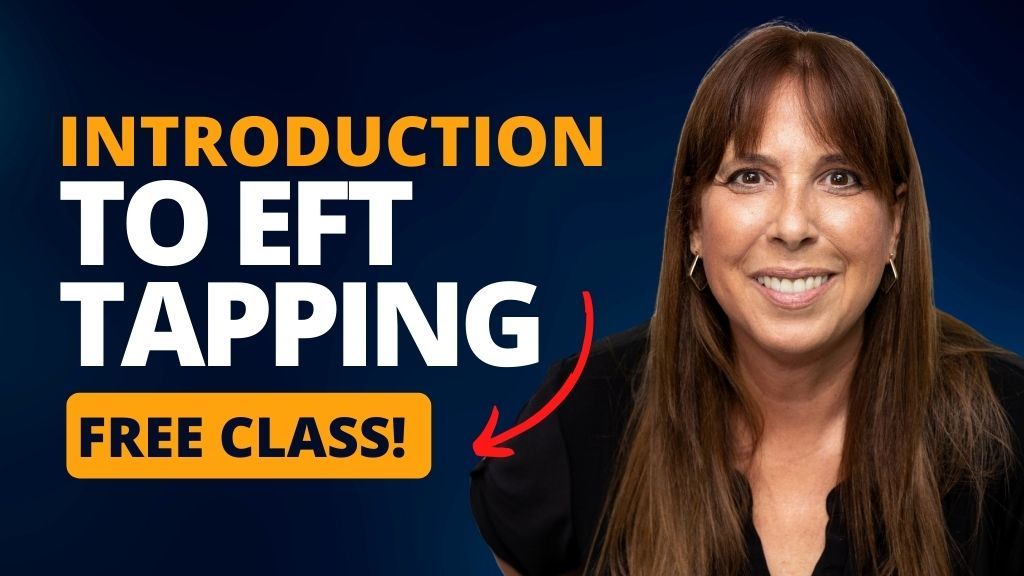
Classic EFT vs. Clinical EFT: What’s the Real Difference?
Deborah Lindsey
Classic EFT vs. Clinical EFT: Understanding the Difference
When people begin exploring EFT Tapping, they quickly discover two paths: Classic EFT and Clinical EFT. Both use the same core techniques and share the same origin story, yet their philosophies are worlds apart. Understanding this distinction matters, especially if you’re choosing where to get certified as a practitioner.
At first glance, “Clinical EFT” might sound like the more professional, research-based choice. But as anyone who has actually practiced EFT knows, the true power of EFT lies not in the science, but in energy. This is where Classic EFT shines.
At first glance, “Clinical EFT” might sound like the more professional, research-based choice. But as anyone who has actually practiced EFT knows, the true power of EFT lies not in the science, but in energy. This is where Classic EFT shines.
The Origins of EFT: Where It All Began
EFT, or Emotional Freedom Techniques, was created by Gary Craig in the 1990s as a simple, elegant, and profoundly effective method to balance the body’s energy system and release emotional distress.
His vision was clear: make EFT accessible, human, and personal.
It didn’t require a therapist’s license, a scientific study, or a clinical setting. It required presence, compassion, and an understanding of how energy moves through the body. This original form, Classic EFT, is the foundation of all tapping methods and brands that followed.
It didn’t require a therapist’s license, a scientific study, or a clinical setting. It required presence, compassion, and an understanding of how energy moves through the body. This original form, Classic EFT, is the foundation of all tapping methods and brands that followed.
What Is Clinical EFT?
“Clinical EFT” emerged later when researcher Dawson Church, founder of Clinical EFT, once a valued collaborator with Gary Craig, rebranded EFT after a very public professional split. His version focused on his strength —scientifically validating the efficacy of EFT Tapping.
It’s important to know that Clinical EFT did not reinvent EFT, it merely rebranded it. The tapping points are the same. The core techniques are identical. In fact, the "48 Clinical Techniques" espoused as something unique to Clinical EFT are taken directly from Classic EFT.
What changed was the focus.
Clinical EFT emphasizes laboratory evidence and research publications. It’s marketed as a structured, scientifically backed model, which was appealing to those who valued data and formal recognition within mainstream psychology. At the time Clinical EFT was created, that was very important.
Over time, as EFT became a worldwide phenomenon, the need for studies to prove its efficacy waned. The proof was "in the pudding" so to speak as the millions of people who now used EFT already KNEW it worked from personal experience. The validation was nice to have, but it wasn't necessary anymore.
Another important distinction is that Clinical EFT was both created by is taught by a researcher — not an EFT practitioner. So when you learn Clinical EFT, you learn it from that perspective.
In contrast, Clinical EFT is taught by a master EFT practitioner with more than 25 years of hands-on experience working one-on-one with clients. The contrast is central to your decision as to which EFT certificaton path is right for you.
But science, while valuable, is not where EFT’s true power begins.
It’s important to know that Clinical EFT did not reinvent EFT, it merely rebranded it. The tapping points are the same. The core techniques are identical. In fact, the "48 Clinical Techniques" espoused as something unique to Clinical EFT are taken directly from Classic EFT.
What changed was the focus.
Clinical EFT emphasizes laboratory evidence and research publications. It’s marketed as a structured, scientifically backed model, which was appealing to those who valued data and formal recognition within mainstream psychology. At the time Clinical EFT was created, that was very important.
Over time, as EFT became a worldwide phenomenon, the need for studies to prove its efficacy waned. The proof was "in the pudding" so to speak as the millions of people who now used EFT already KNEW it worked from personal experience. The validation was nice to have, but it wasn't necessary anymore.
Another important distinction is that Clinical EFT was both created by is taught by a researcher — not an EFT practitioner. So when you learn Clinical EFT, you learn it from that perspective.
In contrast, Clinical EFT is taught by a master EFT practitioner with more than 25 years of hands-on experience working one-on-one with clients. The contrast is central to your decision as to which EFT certificaton path is right for you.
But science, while valuable, is not where EFT’s true power begins.
Classic EFT: The Energy-First Approach
Classic EFT is rooted in the principle of energy first, science second.
It recognizes that everything—our thoughts, emotions, and physical sensations—is simply energy in motion. When that energy becomes blocked or stagnant, we experience it as a symptom. By tapping on the body’s meridian system while focusing on the underlying emotional or energetic disruption, we clear the blockage and restore natural flow. Once balance is reestablished, the symptom—merely a signal that energy was stuck—naturally dissolves.
Rather than viewing tapping as an impersonal process to be analyzed in a lab, Classic EFT honors the deeply human side of healing. It asks, What is the soul learning through this experience? And where has the energy become disrupted?
Skilled practitioners can sense these blockages by reading the energy system and following its subtle cues. In this way, Classic EFT is personal, intuitive, and alive—guided by empathy, presence, and connection, not by lab results or rigid protocol.
At the Center for EFT Studies, Deborah Lindsey teaches EFT from this energy-first perspective. Science can confirm that EFT works, but it cannot explain how it works, nor can it reproduce the real-time connection that happens between practitioner and client.
To become a truly exceptional EFT practitioner who achieves consistent, transformational results, you must understand and work directly with the body’s energy system. Classic EFT explores how energy aligns with emotional, mental, and physical well-being and recognizes that all healing begins at the soul level.
As Deborah often says, “Science is the caboose on the train, not the engine. Energy leads the process; the research simply confirms what we already know.”
It recognizes that everything—our thoughts, emotions, and physical sensations—is simply energy in motion. When that energy becomes blocked or stagnant, we experience it as a symptom. By tapping on the body’s meridian system while focusing on the underlying emotional or energetic disruption, we clear the blockage and restore natural flow. Once balance is reestablished, the symptom—merely a signal that energy was stuck—naturally dissolves.
Rather than viewing tapping as an impersonal process to be analyzed in a lab, Classic EFT honors the deeply human side of healing. It asks, What is the soul learning through this experience? And where has the energy become disrupted?
Skilled practitioners can sense these blockages by reading the energy system and following its subtle cues. In this way, Classic EFT is personal, intuitive, and alive—guided by empathy, presence, and connection, not by lab results or rigid protocol.
At the Center for EFT Studies, Deborah Lindsey teaches EFT from this energy-first perspective. Science can confirm that EFT works, but it cannot explain how it works, nor can it reproduce the real-time connection that happens between practitioner and client.
To become a truly exceptional EFT practitioner who achieves consistent, transformational results, you must understand and work directly with the body’s energy system. Classic EFT explores how energy aligns with emotional, mental, and physical well-being and recognizes that all healing begins at the soul level.
As Deborah often says, “Science is the caboose on the train, not the engine. Energy leads the process; the research simply confirms what we already know.”
The Core Difference: Energy First vs. Science First
While Classic EFT and Clinical EFT both teach all of the core techniques and processes of Gary Craig's original EFT teachings, the approach to healing is very different.
Classic EFT
Clinical EFT
Origin
Created by Gary Craig; Expanded by Deborah Lindsey
Developed by Dawson Church after the split
Focus
Energy and personal transformation
Scientific validation and clinical structure
Approach
Intuitive, personal, experiential
Impersonal, research-oriented
Teacher
Taught by an experienced practitioner with lived experience
Taught by a researcher and author
EFT Techniques
All core techniques plus new modern techniques
All core techniques
Core Belief
Healing happens through energy flow
Healing is measured and validated through data
Learning Experience
Deeply personal and transformational
Impersonal and academic
Where the “Clinical” Approach Misses the Point
The word clinical carries a sense of formality—cold, structured, and detached. That may fit a medical setting, but EFT was never meant to be impersonal.
When you make EFT “clinical,” you risk removing the very elements that make it work: connection and energy.
Clinical EFT may demonstrate effectiveness in published studies, but those numbers represent what practitioners of Classic EFT have already known for decades: tapping works. Real mastery of EFT comes from understanding the connection between energy, emotion, and soul-level lessons.
Clinical EFT may demonstrate effectiveness in published studies, but those numbers represent what practitioners of Classic EFT have already known for decades: tapping works. Real mastery of EFT comes from understanding the connection between energy, emotion, and soul-level lessons.
Why Classic EFT Produces Deeper Results
EFT is an art as much as it is a technique. It’s about tuning in to the client’s energy field, trusting intuition, and allowing the subconscious to guide the process.
Classic EFT honors that flow. It trains practitioners to:
-
Listen deeply to energy shifts.
-
Follow intuition, not rigid scripts.
-
Hold space for personal, emotional release and transformation, not just symptom relief.
That’s why students who study Classic EFT often report that their sessions are transformational, not transactional.
They don’t just learn “how” to tap. They learn why EFT works at the energetic level, and how to use that to improve results.
Experience Over Experiment
Research is valuable, but it’s not the same as experience.
A scientist can measure cortisol levels before and after tapping. A practitioner can feel the energy release in real time.
Both perspectives matter, but one leads to healing and the other follows it.
Classic EFT keeps practitioners focused on the cause (energy) not the effect.
Learn EFT the Way It Was Meant to Be Practiced
At the Center for EFT Studies, students learn EFT the way Gary Craig intended—personal, intuitive, and energy-based—while benefiting from decades of refinements made by master instructor Deborah Lindsey, one of the pioneers in EFT training worldwide.
Her certification programs go beyond the mechanical steps of tapping to teach students how to work with energy at a deep, practical level, helping them create life-changing results for themselves and their clients.
If you want to understand EFT not just as a technique, but as an energetic art form, Classic EFT is where to begin.
You Might Also Like...
Looking to go deeper into EFT? Check out these related posts:
🌟 Ready to Take the Next Step?
Explore the EFT Certification Courses Online at the Center for EFT Studies and discover how you can use tapping to change lives—including your own.
Join Our Newsletter
Not ready to commit? Join our newsletter to stay in the loop.
Thank you!
Follow us
-
Facebook
-
Instagram
-
YouTube
-
TikTok
Get in touch with us
Call/Text
+1-304-295-4411
WhatsApp
+507-6817-8825

Free Introduction to EFT Course
On the next screen, click,
"Register Now"
Next, "Create an Account" to be automatically added to the classroom.
Log In
Then you will be in the class!

